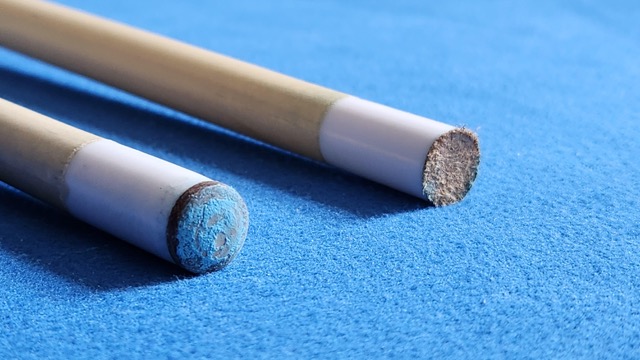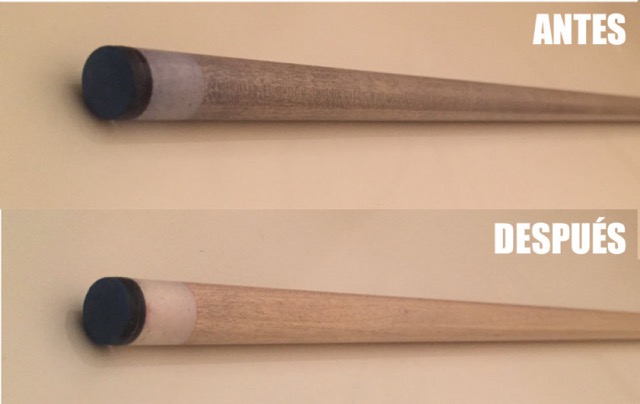How To Properly Do Pool Cue Maintenance
Key Takeaways
- Keep your cue clean after every game. A quick wipe with a microfiber cloth helps remove chalk and dirt. Regular cue shaft cleaning with the right tools keeps your cue feeling smooth and performing well.
- Check and shape your tip regularly. Good pool cue tip maintenance means keeping the tip round, slightly rough, and able to hold chalk. A worn-out tip can affect your control and lead to miscues.
- Store your cue the right way. Even with perfect pool cue maintenance, poor storage can ruin your cue. Always use a padded case, avoid extreme temperatures, and store it flat or upright to prevent warping.

Pool Cue Maintenance
For premium pool cues, high-quality maintenance tools, and durable cases that protect your investment, visit Pearson® Cues and elevate your pool cue maintenance game with gear trusted by professionals.
What To Prepare For Pool Cue Maintenance
If you want your cue to stay in great shape and play smoothly, a little care goes a long way.
Pool cue maintenance doesn’t have to be complicated. You just need the right tools to keep things clean and protected.
Here’s what to have on hand:
- Microfiber Cloths: Use a soft microfiber cloth every day to wipe down the shaft. It helps remove chalk, oil, and dirt without scratching the cue’s surface. It’s a quick and easy way to keep your cue looking and feeling fresh.
- Shaft Cleaning Kit: For a deeper cue shaft cleaning, a shaft cleaning kit is super helpful. These usually come with special solutions and polishing tools like the Q-Wiz to remove buildup. They keep the shaft smooth and make your cue feel like new after each cleaning.
- Cue Tip Shaper or Scuffer: A tip shaper or scuffer helps maintain its shape and texture so it holds chalk better. This pool cue tip maintenance technique gives you more control over your shots and keeps your game sharp.
- Quality Cue Case: Don’t forget to protect your cue when it’s not in use. A well-padded pool stick storage like a cue case shields it from dust, moisture, and bumps, whether you’re storing it at home or taking it to the pool hall.
These simple tools make pool cue maintenance easy and help extend the life of your cue. Taking a few minutes to care for your gear can really boost your performance over time.
How To Properly Do Pool Cue Maintenance
1. Wipe After Use
Keeping your cue clean after every game is one of the easiest but most important habits for long-term cue maintenance.
Start by wiping the shaft and butt of your cue with a clean, dry microfiber cloth. This removes chalk dust, hand oils, and dirt that can build up during play.

Use these types of microfiber cloth to clean your cue after use. Source: Amazon
Over time, these residues can affect the smoothness of your shaft and even cause damage to the finish. If your shaft is made of wood, remember that it’s porous. Dirt and oil can get trapped inside these pores, making the shaft feel sticky.
To prevent this, you can close the pores by burnishing.
Simply rub the shaft with a smooth piece of undyed leather. Then, move the leather up and down the shaft while gently rotating it to create heat through friction.
If you prefer to skip the heat, you can use a pool cue cleaner like Sil Kleen, which protects the shaft with a simple wipe.
2. Don’t Overchalk
When doing pool cue maintenance, chalk is important for control and accuracy, but using too much of it can actually do more harm than good.
When chalk builds up on the cue tip, it often transfers to the shaft, leading to a gritty, dusty feel. Over time, this buildup can damage the finish and surface of the shaft, making regular cue shaft cleaning more difficult and less effective.

Chalk is good, but don’t overdo it. Source: GamingWeekender
To avoid this, use chalk sparingly and apply it properly.
If your chalk is new, avoid digging a deep hole into the center. You want a flat, even surface.
When applying chalk, lightly brush it onto the tip, but don’t grind or twist the chalk into it. This bad habit may cause visible wear around the ferrule and leave behind those unwanted blue chalk rings that are tough to clean.
Lastly, light brushing covers the tip evenly without forcing excess chalk into the leather or spreading it onto the shaft.
3. Check Your Tip Regularly
For effective pool cue tip maintenance, inspect your tip often for wear, flattening, or cracking. If the tip is starting to look flat or smooth, it won’t hold chalk properly, and that leads to more miscues.
Your tip should have a curved shape, like the radius of a dime or nickel.

The shape of pool cue tip. Source: Reddit
To maintain its original shape, avoid scratching the ferrule while shaping; only apply tools to the tip face. To prevent mushrooming, use a burnisher or rasp on the edges. If your tip’s side becomes thinner than a dime, it needs to be replaced.
When replacing a tip, never use standard super glue as it can damage the shaft. Only use non-porous glue made specifically for cue tips to secure it properly without harming the wood.
Also, if your cue is brand new, the tip likely needs to be scuffed and shaped before play. Skip this step, and you’ll likely miscue.
Read more: How To Replace A Pool Cue Tip? 6 Steps To Change The Pool Cue Tip
4. Cleaning the Shaft
Keeping the shaft of your pool cue clean is one of the easiest ways to improve how it feels in your hand and how it performs on the table. Over time, chalk, oil from your hands, and dirt can build up, making the shaft feel sticky or rough. That’s where regular cue shaft cleaning comes in.
One of the best tools for cue shaft cleaning is the Q-Wiz, a reusable double-sided disc. One side is for cleaning, the other for polishing.
- Start with the cleaning side to remove chalk and grime.
- Gently rub it up and down the shaft using long, even strokes.
- After that, wipe off any remaining dust with a clean microfiber cloth.
- Use the polishing side if you want a smoother finish.

Before vs After the pool shaft is cleaned. Source: Poolmania
Read more: How To Clean a Pool Cue Shaft? 7 Steps for Pool Cue Shaft Maintenance
You can rinse the Q-Wiz underwater when it gets dirty. Just let it dry before storing.

Use Q-Wiz to clean your shaft regularly. Source: F.G. Bradley’s
If you don’t have a Q-Wiz, you can use a damp cloth with cue cleaner or a small amount of rubbing alcohol. Clean in sections with light pressure. Be careful not to soak the shaft, and never use harsh chemicals—they can damage the wood or cause it to dry out.
However, be aware that some products contain waxes, silicone, or lanolin. These might seem like good options, but they can actually harm the shaft over time by softening the wood and breaking down its natural structure.
Instead, specifically look for cue cleaners like Sil Kleen, Cue Silk, and Cue Doctor.
If you’re using a modern shaft like the Pearson® Carbon Clear® 2 Shaft Uni-Loc, you may want to use specialty wipes or cleaning pads made for carbon fiber. These will help keep the shaft slick and looking new without scratching the surface.
5. Know How To Properly Storage
Taking good pool cue maintenance is just as important to store it the right way. Even if you’re consistent with your cue shaft cleaning, poor storage can cause damage that affects how your cue feels and performs.
Use a Quality Cue Case
A sturdy, well-padded cue case is your first line of defense. It protects the cue from dust, scratches, and most importantly, moisture.
Moisture can seep into the shaft and cause warping over time. A good case also keeps pressure off your cue while in storage or during transport.
For long-term use, look for poocases that have moisture-wicking liners or foam padding that adds extra protection. Learn how to choose a good pool cue here.

Pearson® Case 2 Butts and 2 Shafts. Source: Pearson® Cues
Recommended products: Pearson® Pool Cues Case
Avoid Extreme Temperatures
Pool cues are often made of wood, which is sensitive to changes in temperature and humidity. Heat can dry out the wood, leading to cracks. Cold or damp conditions can cause swelling, warping, or loosening of the cue joints.
To prevent this:
- Never store your cue in a car, garage, or any space that gets too hot or too cold.
- Avoid placing the case next to a heater, under direct sunlight, or in a damp basement.
- Keep your cue in a climate-controlled area with stable temperature and humidity.
Even if you’re on top of your cue shaft cleaning, exposure to heat and humidity can undo your efforts and damage the wood.
Store It Flat or Upright (Not Leaning)
Always store your cue flat in its case or upright in a secure rack. Avoid leaning it against a wall or leaving it on an uneven surface for long periods, this puts uneven pressure on the shaft and can cause it to warp.
If using a wall-mounted rack for pool stick storage, make sure it’s perfectly straight and not installed on an outside wall where temperature shifts are more extreme.
For extended pool stick storage, it’s best to keep your cue in a hard case, laid flat on a surface, and slightly open to let air circulate.

Storing pool cues upright. Source: monstercue.com
Read more: How To Store Pool Cues In A Case? 3-Step Guide To Pool Cue Maintenance

Dave Pearson
Dave Pearson, the world's leading pool entertainer, is renowned globally as the ultimate exhibition player.
Boasting 20 world records endorsed by the prestigious Guinness Book of World Records, Dave established a legendary history in the sport industry.
